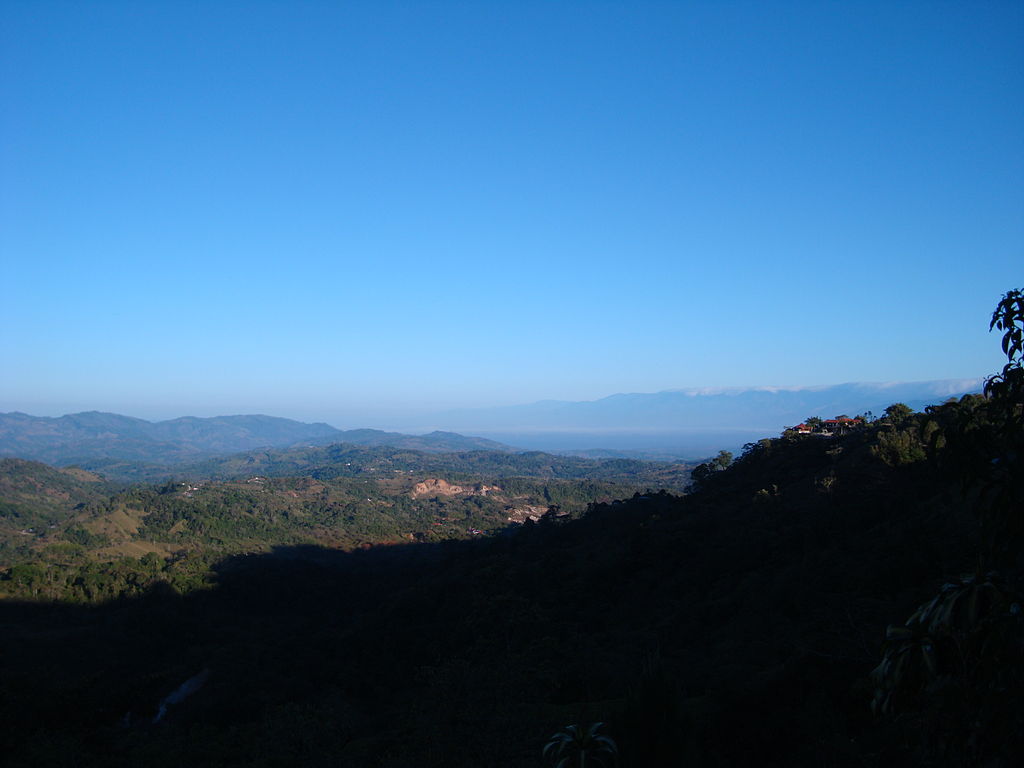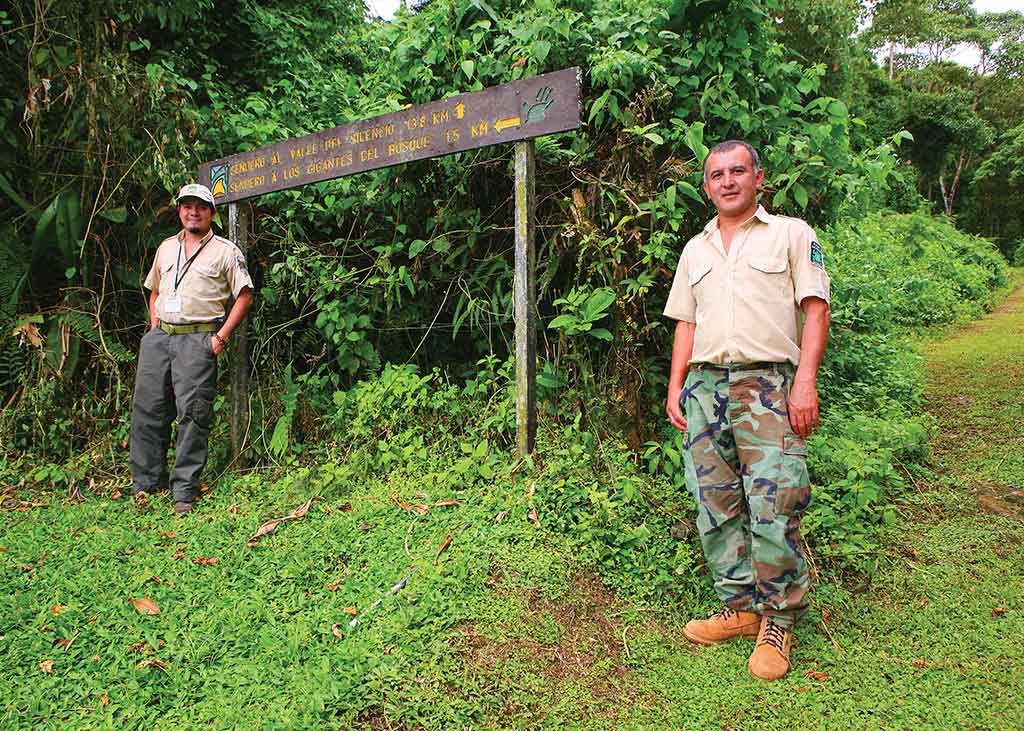San Vito is a pleasant hill town that nestles on the east-facing flank of the Fila Costeña, overlooking the southern end of the Valle de Coto Brus, at 990 meters (3,250 feet) above sea level. The town was founded by Italian immigrants in the early 1850s. The tiny park at the top of the hill in the heart of town has a life-size statue of two children under an umbrella dedicated to “La Fraternidad Italo-Costarricense.”

Topography surrounding San Vito. Photo © Eric T Gunther (Own work) [CC BY 3.0], via Wikimedia Commons.
Recent archaeological finds include stone petroglyphs and a metate, on display.Finca Cántaros (tel./fax 506/2773-5530, 8:30am-5pm daily, $5), a 9.5-hectare (23-acre) reserve three kilometers (2 miles) southeast of San Vito, is centered on a beautifully restored farmhouse converted into a gallery with beautiful indigenous crafts, plus a library. Self-guided trails lead to Laguna Zoncho, which attracts waterfowl, and into forest good for spotting such rare local inhabitants as the collared trogon, orange-collared manakin, and streaked saltator. Rest spots offer lovely views over San Vito. Recent archaeological finds include stone petroglyphs and a metate, on display.Cooprosanvito (tel. 506/2773-3932), the local coffee cooperative, offers a tour of its beneficio (processing facility), ending with a tasting. Desafío Tour (tel. 506/2773-5810) also offers a coffee tour, plus horseback riding and ATV tours.
Estación Biológica Las Cruces (tel. 506/2773-4004), six kilometers (4 miles) south of San Vito, is a nature lover’s delight. The center, in the midst of a 325-hectare (800-acre) forest reserve proclaimed part of La Amistad Biosphere Reserve, is run by the Organization of Tropical Studies (OTS). New plants are propagated for horticulture, and species threatened with habitat loss and extinction are maintained for future reforestation efforts.

Park rangers at La Armistad National Park. Photo © Christopher P. Baker.
The reserve is in mid-elevation tropical rainforest along a ridge of the Fila Zapote at 1,900 meters (3,200 feet) elevation. During the wet season, heavy fog and afternoon clouds spill over the ridge, nourishing a rich epiphytic flora of orchids, bromeliads, ferns, and aroids. The forest is a vital habitat for pacas, anteaters, opossums, kinkajous, porcupines, armadillos, sloths, tayras, monkeys, deer, small cats, more than 45 species of bats, and some 800 species of butterflies. Bird-watching at Las Cruces is especially rewarding: More than 400 species have been recorded.
The highlight is the 12-hectare (30-acre) Wilson Botanical Garden (8am-5pm daily, adults $8, children free) established in 1963 by Robert and Catherine Wilson, former owners of Fantastic Gardens in Miami. Both are now buried on the grounds. The garden was inspired by the famous Brazilian gardener Roberto Burle-Marx, who designed much of the garden following his vision of parterres as a palette. Approximately 10 kilometers (6 miles) of well-maintained trails (and many more in the forest reserve) meander through the Fern Grove, Orchid Grotto, the largest palm collection in the world, heliconia groves, and other locales. The garden also has an open-air cactus exhibit, plus greenhouses of anthuriums, ferns, elkhorns, and more. More than 2,000 native plant species are on display, and a bird-watching tower has been added.
Guided walks, including night tours and early birding walks, as well as meals are available by reservation; and you can buy self-guided-tour booklets in the store.
Excerpted from the Tenth Edition of Moon Costa Rica.